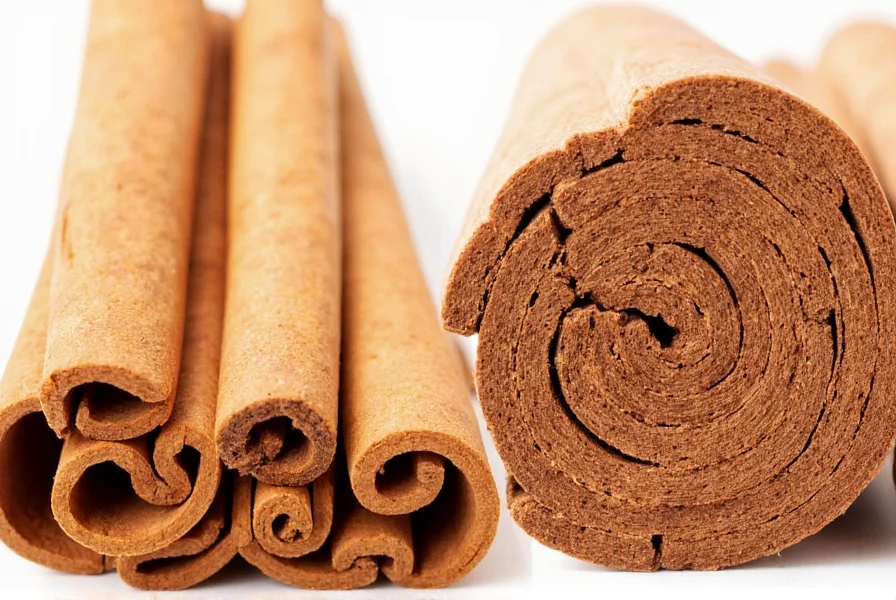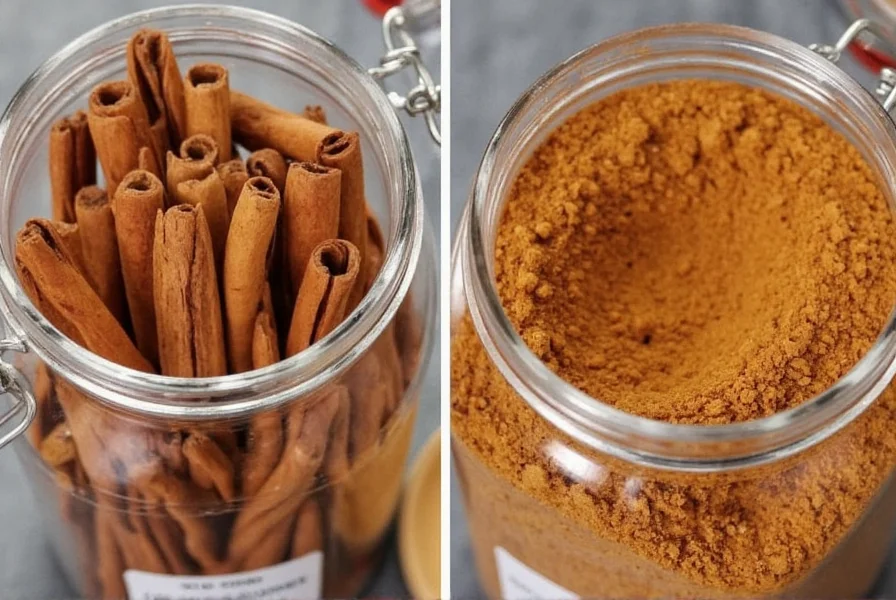When searching for the best Ceylon cinnamon, understanding what distinguishes premium quality from inferior products is essential. Unlike the more common Cassia cinnamon, Ceylon cinnamon (Cinnamomum verum) offers a distinctive flavor profile and critical health advantages that make it worth seeking out for regular culinary and wellness applications. This guide provides objective criteria for identifying authentic, high-quality Ceylon cinnamon based on physical characteristics, sourcing, and quality markers.
What Makes Ceylon Cinnamon Different
Ceylon cinnamon, often called "true cinnamon," originates from Sri Lanka (formerly Ceylon) and southern India. The key botanical difference lies in its composition: Ceylon cinnamon comes from Cinnamomum verum trees, while most supermarket "cinnamon" is actually Cassia from Cinnamomum cassia trees. This distinction matters significantly for both flavor and health considerations.
The most critical difference for health-conscious consumers is coumarin content. Cassia cinnamon contains 60-120 times more coumarin than Ceylon cinnamon. Coumarin, while naturally occurring, can cause liver damage when consumed in large quantities over time. For those using cinnamon regularly for potential blood sugar benefits or daily culinary use, selecting genuine Ceylon cinnamon is a safer choice.

Quality Markers of Premium Ceylon Cinnamon
Identifying high-quality Ceylon cinnamon requires examining several physical characteristics. Understanding these quality indicators helps avoid common pitfalls when purchasing what might be mislabeled or inferior products.
| Quality Feature | Ceylon Cinnamon | Cassia Cinnamon |
|---|---|---|
| Physical Structure | Multiple thin, papery layers forming a delicate, hollow scroll (like a cigar) | Single thick, hard layer that's difficult to break |
| Color | Light tan to medium brown | Dark reddish-brown |
| Texture | Fragile, easily crumbled between fingers | Hard, requires significant force to break |
| Taste Profile | Subtle, complex with citrus notes, mildly sweet | Intensely spicy, harsher, more pungent |
| Coumarin Content | Approximately 0.017g per kg | Approximately 6.97g per kg |
How to Identify Authentic Ceylon Cinnamon
When evaluating potential purchases, examine these specific quality markers that distinguish premium Ceylon cinnamon:
- Layer Structure: Genuine Ceylon cinnamon sticks consist of multiple thin layers that form a delicate, almost hollow tube. When broken, it should crumble easily rather than snap cleanly like Cassia.
- Aroma Complexity: High-quality Ceylon cinnamon emits a subtle, complex fragrance with citrus and floral notes, not an overpowering spicy scent.
- Color Consistency: Look for uniform light tan coloring without dark spots or excessive moisture that might indicate improper drying.
- Label Verification: Check for "Cinnamomum verum" or "Cinnamomum zeylanicum" on packaging, not just "cinnamon." Products labeled "Ceylon cinnamon" should originate from Sri Lanka.
- Certification Marks: Reputable products often carry organic certifications or geographical indication (GI) tags verifying Sri Lankan origin.
Health Considerations: Why Quality Matters
The health implications of choosing between Ceylon and Cassia cinnamon represent one of the most significant reasons to seek authentic Ceylon varieties. Research shows that while both types offer potential health benefits, the coumarin content in Cassia creates safety concerns for regular consumption.
A comprehensive review published in Food and Chemical Toxicology established that the acceptable daily intake of coumarin is 0.1 mg per kilogram of body weight. For a 150-pound person, this translates to approximately half a teaspoon of Cassia cinnamon daily before reaching potentially harmful levels. In contrast, one would need to consume over 30 teaspoons of Ceylon cinnamon to reach the same coumarin threshold.
For individuals using cinnamon for potential blood sugar regulation benefits, Ceylon cinnamon provides similar bioactive compounds (including cinnamaldehyde) without the coumarin risk. This makes it the preferred choice for daily therapeutic use, particularly for those with liver concerns or taking medications metabolized by the liver.
How to Select the Best Ceylon Cinnamon
When searching for the best Ceylon cinnamon, consider these practical selection criteria that go beyond basic identification:
Sourcing and Origin Verification
The highest quality Ceylon cinnamon comes from Sri Lanka, where specific growing conditions produce superior flavor profiles. Look for products specifying regions like Matara, Galle, or Kandy, which are renowned for premium cinnamon production. Some specialty retailers provide traceability information showing the exact plantation source.
Packaging and Freshness Indicators
Proper packaging significantly affects cinnamon quality. The best products use airtight, light-resistant containers that preserve volatile oils responsible for flavor and aroma. Check for harvest or packaging dates, as cinnamon gradually loses potency over time. Premium Ceylon cinnamon should have a harvest date within the past 12-18 months for optimal quality.
Avoiding Common Quality Pitfalls
Be wary of products making these red flag claims:
- "Extra strong" or "intense flavor" descriptions (authentic Ceylon is subtle, not overpowering)
- Extremely low prices (high-quality Ceylon typically costs 2-3 times more than Cassia)
- Vague origin information like "imported cinnamon" without specific country designation
- Products labeled simply as "cinnamon" without specifying Ceylon variety
Using Ceylon Cinnamon: Practical Recommendations
Once you've selected high-quality Ceylon cinnamon, proper storage and usage maximize its benefits:
- Storage: Keep in an airtight container away from light and heat. Properly stored, Ceylon cinnamon sticks maintain quality for 2-3 years, while powder remains potent for 1-2 years.
- Culinary Applications: Its delicate flavor shines in dishes where cinnamon is the featured spice—think French toast, rice pudding, or spiced teas. Unlike Cassia, Ceylon won't overpower other ingredients.
- Daily Consumption: For therapeutic use, 0.5-2 grams (approximately 1/4 to 1 teaspoon) daily provides potential benefits without safety concerns. Consult your healthcare provider for personalized recommendations.

Conclusion
Selecting the best Ceylon cinnamon requires understanding its distinctive physical characteristics, verifying authentic origin, and recognizing quality markers that distinguish it from inferior or mislabeled products. The investment in genuine Ceylon cinnamon pays dividends in both culinary applications and health considerations, particularly for those incorporating cinnamon into their daily wellness routine. By focusing on the quality indicators outlined in this guide, consumers can confidently select Ceylon cinnamon that delivers on flavor, safety, and potential health benefits without falling for common marketing pitfalls.
What's the difference between Ceylon cinnamon and regular cinnamon?
"Regular" cinnamon typically refers to Cassia cinnamon, which comes from Chinese cinnamon trees. Ceylon cinnamon (Cinnamomum verum) is the "true" cinnamon with multiple thin layers, lighter color, more delicate flavor, and critically, 60-120 times less coumarin than Cassia. This makes Ceylon safer for regular consumption.
How can I tell if my cinnamon is real Ceylon?
Examine the physical structure: Ceylon cinnamon consists of multiple thin, papery layers forming a delicate scroll that crumbles easily. It has a light tan color and subtle citrusy aroma. Cassia is a single thick, hard layer that's dark reddish-brown with a stronger, spicier scent. Check labels for "Cinnamomum verum" or "Ceylon" and origin from Sri Lanka.
Is Ceylon cinnamon worth the higher price?
For regular consumption, yes. Ceylon cinnamon's significantly lower coumarin content makes it safer for daily use, especially for those using cinnamon for potential blood sugar benefits. While more expensive (typically 2-3 times the price of Cassia), the health advantages and superior flavor complexity justify the cost for frequent users. Occasional culinary use might not warrant the premium.
How much Ceylon cinnamon can I safely consume daily?
You can safely consume up to 2-3 teaspoons (approximately 5-8 grams) of Ceylon cinnamon daily without coumarin concerns. This is significantly more than the safe limit for Cassia cinnamon (about 1/2 teaspoon daily). For therapeutic use, most studies use 0.5-2 grams (1/4 to 1 teaspoon) daily. Consult your healthcare provider for personalized recommendations.
Does Ceylon cinnamon have the same health benefits as Cassia?
Yes, Ceylon cinnamon contains similar beneficial compounds like cinnamaldehyde that provide antioxidant and potential blood sugar regulating effects. Research shows comparable efficacy for many health benefits, but with the critical advantage of minimal coumarin content, making Ceylon safer for regular, long-term consumption without liver health concerns.











 浙公网安备
33010002000092号
浙公网安备
33010002000092号 浙B2-20120091-4
浙B2-20120091-4